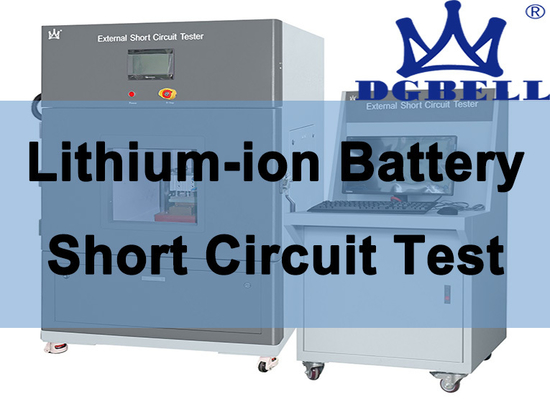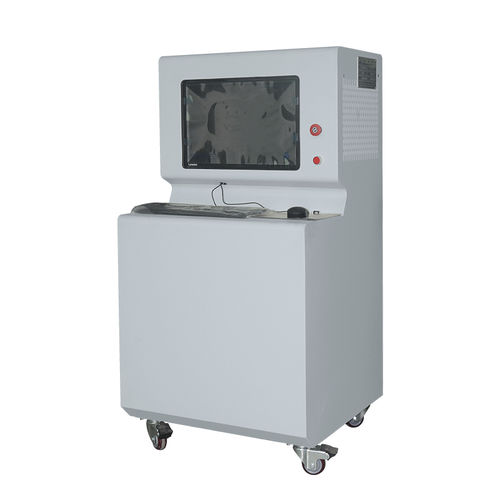
#Industry News
How are UL 2580 Battery Tests Performed with Test Chambers? (Part-2)
How are UL 2580 Battery Tests Performed with Test Chambers? (Part-2)
Usually, lithium-ion batteries are among the safest forms to use. However, if they're damaged or include defects, they may be dangerous for employees who control material handling equipment. Whenever you're on the market for a brand-new lithium-ion battery provider, UL 2580 battery safety test certificates are a must-have. The meticulous testing and product requirements help make sure you're not carrying a risk, and the certification procedure helps producers ascertain their upkeep and care instructions. The UL 2580 Listed certificates are to different criteria based on the battery's character regarding lithium-ion batteries.
UL 2580, by way of instance, supplies safety-related certificates, validation, testing, review, auditing, counseling, and training solutions to a broad array of customers, including manufacturers, retailers, policymakers, regulators, service businesses, and clients. Class 1 and Class 2 batteries must utilize UL 2580. Testers will test some battery parameters to examine how the battery reacts to conditions in such simulations. UL 2580 battery test prevents battery producers by substituting sub-standard elements that could pose abrupt failures and possible security risks. This article will discuss how these UL 2580 tests are performed with test chambers and test chamber types used for UL 2580 battery tests.
Battery Crush Test (Horizontal)
Battery crush tester simulation of various kinds of power lithium-ion batteries in the practice of usage, the battery endured compression, Manually, pose the multiple requirements which could happen when the battery is pumped by battery smash test machine. UL 2580 test includes a horizontal battery crush test to mimic the squeezing situation of different power batteries at usage. The battery crush test system is also an essential instrument for analyzing and assessing battery solutions' protection. Extrusion pressure is used from the hydraulic head of the piston. The squeeze proceeds until the hydraulic pressure head reads 17.2 Mpa; the Applied drive is all about 13KN.
When the maximum pressure is reached, the strain could be relieved. The prismatic mobile additionally revolves about its horizontal axis. To be able to create its broad negative and narrow side may defy extrusion pressure. Every sample cell is exposed to stress only in 1 way and should use different samples for every evaluation. Semi cylinder or hemisphere type batteries should be parallel to the extrusion apparatus's surface and exposed to extrusion pressure. Regular UL 2580 battery tests are contained in the security standards below. They include easy tests for dimensional precision to dynamic testing to confirm that the item may endure any dynamic and static mechanical stresses to which it could be subject.
Seawater Immersion Test Equipment
There are UL 2580 battery test standards in place designed to estimate the results of seawater immersion at the package level. These are primarily utilized to rate the flow regeneration of these packs. Our instruction for testing the criteria is to determine if there is any significance to the automotive seawater immersion test system.
The seawater immersion test device connects all of the wiring harness, connector, and other parts in line with the entire automobile connection style. Since the monitoring interval could have been made for an overly long general evaluation period, each test was run in parallel. The submersion boats were steel tanks made for the purpose. The immersion period was conducted in an arrangement for every single hour interval. Seawater was ready in a different tank big enough to serve one immersion evaluation by mixing water from a pond to provide salt to its objective. The answer was agitated to market homogeneous conductivity. Seawater was subsequently pumped to the boat in under 10 minutes. Observing both hour immersion, the seawater was pumped from the analyzed car's immersion vessel and moved in the following boat for the next vehicle's immersion.
When we do the seawater immersion testing for UL 2580 battery test certification, some electric vehicles behave unexpectedly. Regular events contained unintended activation of lighting, windshield wipers, and horns. These phenomena might have been a result of the closing of buttons while submerged from the conductive seawater. The 12-volt batteries discharged via the seawater and through other heaps within an hour. This might be beneficial if the release time is quite fast to prevent unintended closing of the primary contractors and possible shock hazard or threat of a shallow voltage arc with potential fire.
Thermal Runaway Test Machine
Damaged or greatly over-heated Li-ion batteries in electric vehicles may transit to some thermal emission response with other gas and heat discharge. The heat might make a battery fire, and speedy gas release can damage the battery-pack casing. To characterize the gas and heat launch of giant automotive Li-ion cells, a more heavy-duty test seat was designed, along with a test set.
UL 2580 battery test standard includes an increased overall awareness of the danger of thermal runaway. We have some other objective to fulfill. Batteries have been used chiefly on non-manned assignments as mobile energy densities are rising. So, this increased stored energy presents the outcome of thermal runaway. The thermal runaway test chamber must follow some procedures to conduct this test. An outside heater is used to heat cells to thermal runaway. A nichrome wire was formed to a little heater component. Then the heater component was subsequently connected to the cell utilizing Kapton tape. The addition of a cable wrap around the Kapton coated heater to maintain the heater from coming from the mobile because the Kapton is heated beyond this glue's melting point. A continuous voltage is placed on the valve until the mobile goes to thermal runaway. During springs, testing is normally powered by 30 W to 50 W.
After the test is completed, some cells could port a substantial quantity of smoke. The cathode meeting had been blown from their mobile. The inner jelly had been blown from the mobile can. We can conclude after observing the results that the cell may temperature was hot enough to spark the Kapton tape wrap and trigger additional fire round the anode, or may, of the mobile.
Conclusion
UL 2580 testing is performed to ascertain if or not a battery or cell is appropriate for the purpose that it is designed before it's approved for use in this item. As a second phase, eligibility also has testing completed battery packs until the item is approved for release to the client. The UL 2580 battery tests are often carried out to confirm that the cells satisfy the company's specifications. However, they might also be utilized to check the cells into arbitrary limits determined by the engineer to ascertain the length of time the cells live under adverse conditions or unusual loads. It determines failure modes or safety variables. The battery packs must also be analyzed with the charger advocated for the program to guarantee compatibility.







